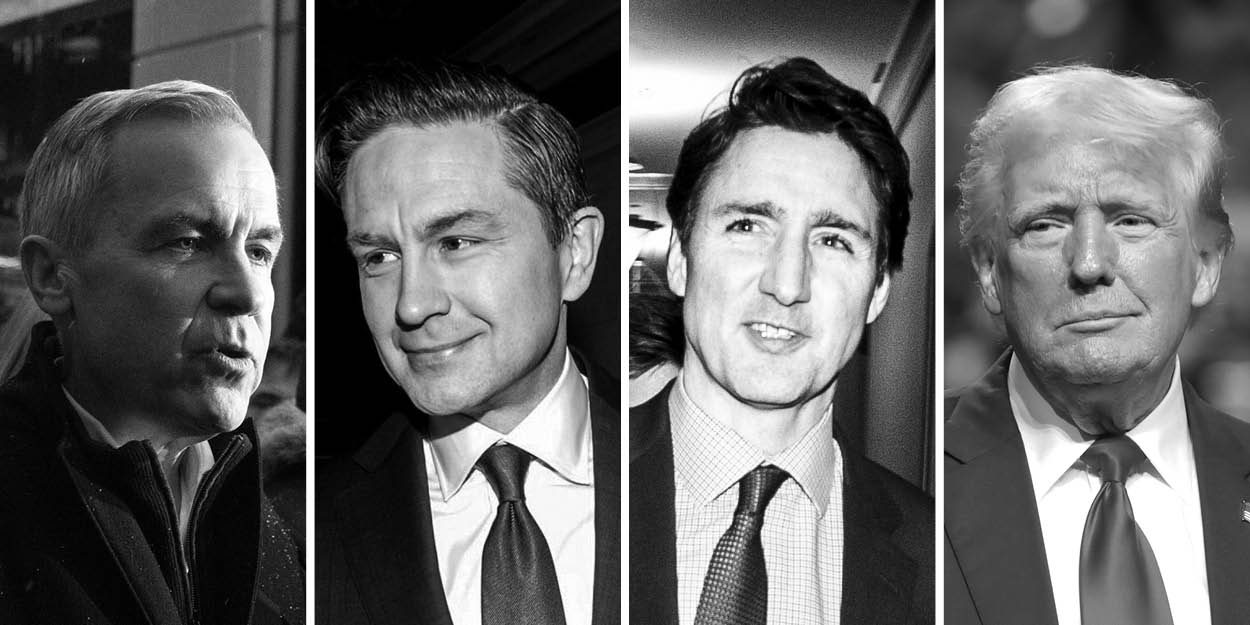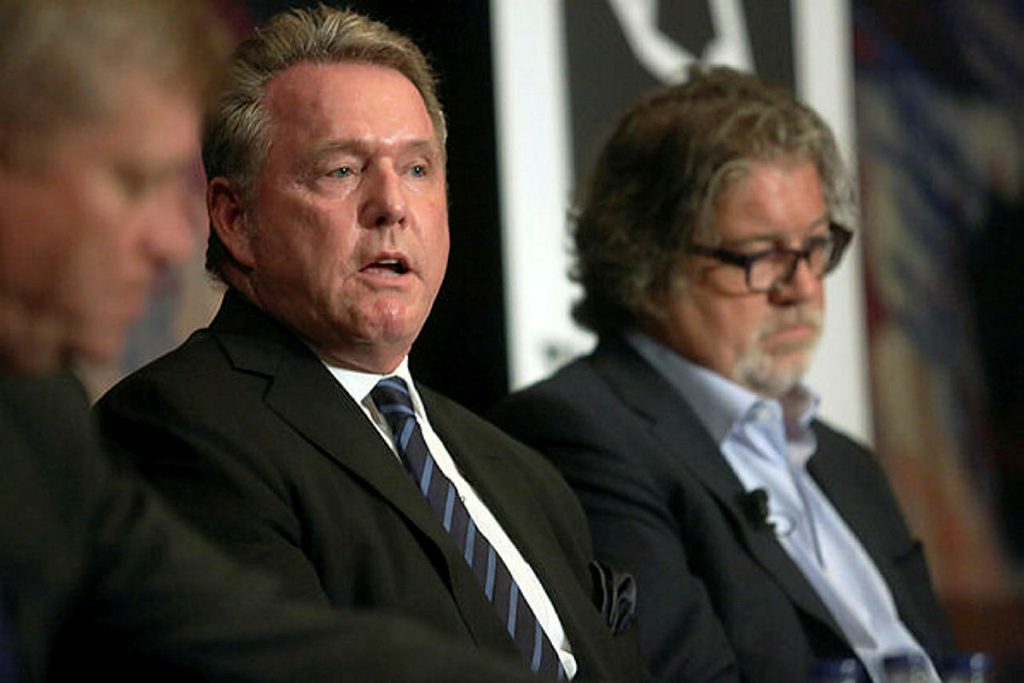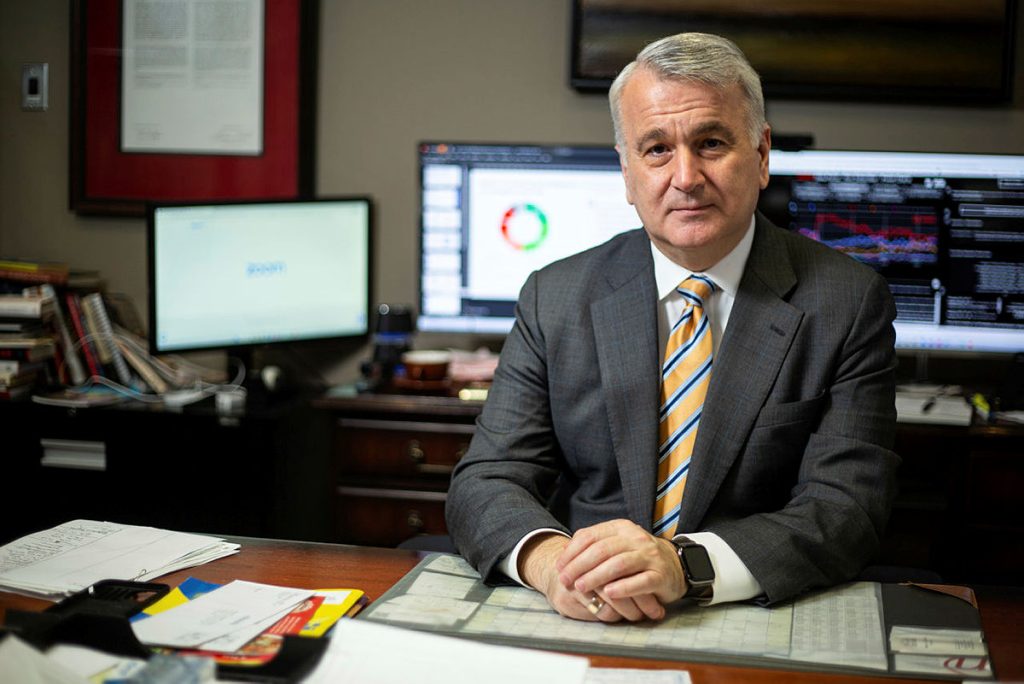Trudeau’s exit, Trump’s threats, and plan to scrap carbon tax tighten polls, say pollsters

Prime Minister Justin Trudeau’s early January announcement that he will step down as party leader, U.S. President Donald Trump’s rhetoric on Canada-U.S. relations, and the Liberal leadership candidates’ pledge to scrap the consumer carbon tax have all played a key role in the narrowing of the gap between the governing party and the Conservatives in the polls, say pollsters.
Before Trudeau (Papineau, Que.) announced on Jan. 6 that he would not seek stay on as party leader, the Conservatives held a lead of up to 27 points over the Liberals. However, recent polls suggest that this gap has narrowed to varying extents. Ekos Research’s latest poll suggests the two parties are nearly within the margin of error, while Nanos Research reports a reduced Conservative lead of 17 points. Last week’s Abacus Data poll places the Conservative lead at 21 points.
A Jan. 29 Ekos poll suggested that the Conservatives held 35.7 per cent of voter support, followed by the Liberals at 32.7 per cent, the NDP at 13.1 per cent, and the Greens at 4.9 per cent.
A Nanos Research poll released last week showed the Conservatives leading with 42 per cent, while the Liberals trailed at 25 per cent, the NDP at 18 per cent, and the Greens at 5.6 per cent.
In contrast, on Jan. 10, Nanos reported a 27-point Conservative lead, with the party polling at 47 per cent, while the Liberals had 19.6 per cent, the NDP 17.9 per cent, and the Greens 5.2 per cent.
An Abacus Data poll from Jan. 28 reflected a five-point gain for the Liberals. The latest results placed the Conservatives at 43 per cent, the Liberals at 22 per cent, the NDP at 18 per cent, and the Greens at five per cent. In contrast, on Jan. 14, the Conservatives polled at 46 per cent, the Liberals at 20 per cent, the NDP at 19 per cent, and the Greens at four per cent.
In an interview with The Hill Times, Frank Graves, president of Ekos Research, said that his polling numbers are based on rolling polls, with his company surveying 250 people each night. He emphasized that he has conducted thorough due diligence to ensure the accuracy of his polling methodology. According to Graves, there appears to be a lag, and he predicted that other polling firms would soon report similar results.
“Everybody else I think is going to arrive at the same destination as I have,” said Graves. “I would have never imagined you could see this kind of change in a straight line plummet [for the Conservatives].”
Graves said that several key factors have contributed to the Liberal Party’s resurgence, including Trudeau’s decision to step down, Trump’s rhetoric about annexing Canada and imposing a 25-per-cent tariff, and the front-runner Liberal leadership candidates’ pledge to eliminate the carbon tax.

“Mr. Trudeau leaving kind of opened up [Canadians to think] that maybe we can look at other options,” said Graves. “And then on top of that, you’ve got this shock and awe emanating from the south, which has both produced visceral concerns about economic impacts, but also—and I got this in the data, it’s very clear—touches on concerns about our national identity and our basic sense of being a unique country with our own values, our own approaches and institutions.”
Graves predicted that the next election would centre around Trump’s rhetoric and the impact of tariffs on the Canadian economy. While Conservative Leader Pierre Poilievre (Carleton, Ont.) has spent months framing the election as a referendum on the carbon tax, the three leading Liberal leadership candidates have each pledged to eliminate it if elected. As a result, Graves said he believes the carbon tax is unlikely to be a major factor in the upcoming election.
“The next election is not going to be about the carbon tax,” he said. “They can keep saying that, but that’s become reasonably unlikely. It’s going to be about Trump and the United States. And how do we cope with this?”
On February 1, Trump announced a 25 per cent tariff on all goods imported from Canada, with a 10 per cent tariff on energy resources. These new tariffs will go into effect on February 4.
Last week, multiple news reports indicated that if Trump were to impose tariffs on Canadian goods, the Liberal government was preparing a multi-billion-dollar relief package for workers impacted by these measures. With trade between Canada and the U.S. exceeding $1-trillion annually, hundreds of thousands of jobs across various Canadian regions depend on the economic relationship.
NDP Leader Jagmeet Singh (Burnaby South, B.C.), who has repeatedly threatened to bring down the Liberal government at the earliest opportunity, said last week that he would support any relief package the government implements for workers affected by Trump’s tariffs. He urged the Liberals to recall Parliament before its scheduled return on March 24 to address the tariffs. Singh, however, reiterated that once the relief package for Canadian workers is passed, his party would move to defeat the government.
“We will be voting against the government, and there will be an election in the spring,” Singh said at a press conference in Sault Ste. Marie, Ont. last week. “But before that time, there will be two months. Is the Liberal government proposing that we do nothing for two months?”
For months, Poilievre and Bloc Québécois Leader Yves-François Blanchet (Beloeil—Chambly, Que.) have both publicly stated their intention to vote against the government on the next confidence vote in the House.
Nik Nanos, founder and chief data scientist at Nanos Research, said that, in his view, Trudeau’s departure is one of the key factors contributing to the narrowing gap between the Conservatives and Liberals. He noted that Trump’s rhetoric and the leadership candidates’ pledge to scrap the carbon tax are already reflected in current polling figures. However, for the Liberals to gain further ground, Poilievre would need to make mistakes.
“Justin Trudeau is no longer on the menu,” said Nanos.

He added that even with the Conservatives’ current 17-point lead, they are well-positioned to secure a majority government. However, Nanos predicted that these numbers could shift after the March 9 Liberal leadership contest, depending on who is chosen as the new leader. Nanos explained that political parties often experience a boost in support during leadership races, as there is “nothing to repel people” while they are in the process of selecting a new leader. Nanos also said that the next election will be about Trump’s tariffs and what effect it has on Canada’s economy, not about carbon tax.
“Donald Trump being one of the primary lenses to look at an election is that what Donald Trump does affects the cost of living in Canada. It affects our competitiveness,” said Nanos. “It affects trade. So Donald Trump is a bit of a catch-all issue that radiates into a lot of different buckets of issues that people are worried about.”
Meanwhile, Liberal MPs and senior party members involved in leadership campaigns have been actively discussing the timing of the next federal election. With opposition parties intent on toppling the government at the earliest chance, many believe the Liberals should call an election sooner rather than later, possibly even before Parliament returns on March 24.
“All options are on the table,” said one former senior Liberal familiar with behind-the-scenes conversations. “You’re running to be prime minister, and your party is running to govern because you want to do well for Canadians.”
The source noted that the federal political landscape has shifted dramatically in less than a month. They pointed out that just weeks ago, Trudeau had no plans to step down, and the Liberals trailed the Conservatives by 27 points. Now, the party is set to elect a new leader in just over a month—who will automatically become the next prime minister. The source emphasized that key decisions will be made after the leadership election, based on the political climate at that time.
Liberal MP Ken Hardie (Fleetwood-Port Kells, B.C.) acknowledged discussions among his colleagues about an early election, but said much depends on whether Trump follows through with his proposed tariffs. If the tariffs necessitate a government relief package, he suggested Parliament would likely reconvene before the next election.
“That’s [early election] been kind of central to a lot of discussions—hallway and otherwise—that have been going on for the past while, but within the last week, we’ve seen the need and the desire to at least have a plan in case Trump does come down with tariffs on Saturday, and a plan for relief would need Parliament to approve some things,” said Hardie.
“If there’s no further ruminating from Mr. Trump on tariffs, then the next pivot point would be March 9, of course, when there’s going to be a new leader, and the new leader would have that opportunity to call an election before March 24.”
arana@hilltimes.com
The Hill Times






 LICENSING
LICENSING PODCAST
PODCAST ALERTS
ALERTS













